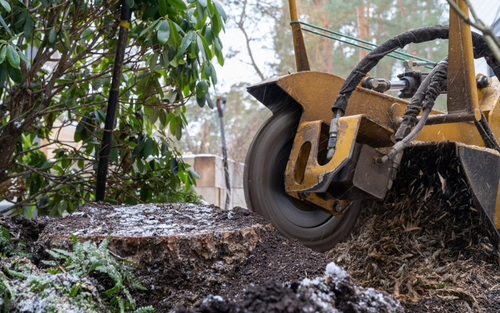Most homeowners develop an emotional attachment to the trees on their property. These natural monuments provide shade during scorching summers, beauty throughout the seasons, and often hold decades of memories. However, there comes a time when even the most beloved tree poses risks that outweigh its benefits.
Recognizing when tree removal is necessary can save you thousands in property damage, prevent injury to your family, and protect your neighbors’ homes. While the decision is never easy, understanding the warning signs helps you make informed choices about your landscape’s safety and health.
The difference between a tree that needs pruning and one that requires complete removal isn’t always obvious to the untrained eye. Professional arborists evaluate multiple factors before recommending tree removal, and learning these criteria can help you spot potential problems before they become emergencies.
Structural Damage That Cannot Be Repaired
Trees showing significant structural compromise often require removal rather than treatment. Large cracks extending through the trunk indicate internal weakness that pruning cannot address. When these fissures appear on multiple sides of the tree or extend more than halfway through the trunk’s diameter, the tree’s stability becomes questionable.
Extensive root damage presents another irreversible structural problem. Construction projects, soil compaction, or root rot can destroy enough of the root system to make the tree unstable. Trees typically need at least 50% of their root system intact to remain viable, and significant root loss makes them prone to toppling during storms.
Multiple trunk splits or severe lean also signal structural failure. While slight leans can be natural, sudden changes in a tree’s posture or pronounced tilting after storms often indicate root or trunk problems that compromise the entire structure.
Disease and Pest Infestations Beyond Treatment
Certain diseases and pest infestations reach points where tree removal becomes the only viable option. Dutch elm disease, oak wilt, and emerald ash borer damage can spread rapidly through trees and to neighboring specimens if not addressed promptly.
Advanced fungal infections that affect the tree’s vascular system often prove fatal. When you notice extensive dieback, wilting leaves during the growing season, or mushroom growth at the tree’s base, the disease may have progressed beyond what treatments can remedy.
Severe pest infestations can also warrant removal. Termites, carpenter ants, or wood-boring beetles that have extensively damaged the tree’s internal structure create safety hazards. These pests weaken the wood from within, making the tree unpredictable during weather events.
Environmental Hazards and Safety Concerns
Trees positioned too close to power lines, buildings, or high-traffic areas may need removal for safety reasons. Utility companies often require the removal of trees that interfere with electrical infrastructure, as they pose fire hazards and can cause widespread power outages.
Storm-damaged trees present immediate risks that often necessitate quick removal. Trees that have lost major limbs, suffered crown damage exceeding 50%, or show signs of shock may not recover and could fail unexpectedly.
Dead or dying trees become safety hazards regardless of their location. These trees can drop branches without warning or fall entirely, making them particularly dangerous in areas where people walk, play, or park vehicles.
Wrong Tree, Wrong Location Problems
Sometimes healthy trees require removal because they’re simply inappropriate for their location. Fast-growing species planted too close to foundations can cause structural damage to homes as their root systems expand and their canopies outgrow the available space.
Trees that consistently cause problems despite being healthy might need removal. Species that drop excessive debris, attract problematic wildlife, or cause severe allergic reactions in family members sometimes create more issues than their benefits justify.
Overcrowding in landscapes can also necessitate removal. When multiple trees compete for the same resources, removing some allows others to thrive and prevents the gradual decline of the entire grouping.
Making the Professional Assessment
While homeowners can identify obvious warning signs, professional assessment remains crucial for tree removal decisions. Certified arborists use specialized tools and training to evaluate internal decay, root health, and structural integrity that aren’t visible to property owners.
Professional evaluations become particularly important for large trees or those near valuable structures. The cost of assessment pales in comparison to potential property damage or liability issues that could arise from an incorrect decision.
Many municipalities require permits for tree removal, especially for mature specimens or trees in protected areas. Professional arborists understand local regulations and can help navigate the permitting process while ensuring removal meets safety standards.
The Economics of Removal Versus Risk
Tree removal costs vary significantly based on size, location, and complexity, but these expenses often represent wise investments compared to potential damage costs. Insurance companies increasingly scrutinize claims related to tree damage, particularly when property owners had warning of problems.
Emergency tree removal after storms or failures typically costs significantly more than planned removal. Scheduling removal during favorable conditions allows for better planning, competitive pricing, and safer execution.
Consider the long-term costs of keeping problematic trees. Ongoing treatment for diseased trees, repeated cleanup of excessive debris, or repeated repairs to infrastructure damaged by root systems can exceed removal costs over time.
Taking Action When Removal Is Necessary
Tree Removal offers more than just clearing hazardous vegetation—it enhances property safety, prevents structural damage, and maintains your landscape’s overall health. When handled professionally, it also protects nearby trees and structures during the process.
Removing a tree is not a decision to take lightly. Timing matters—dormant seasons often bring cost savings and minimize disruption to surrounding growth. Still, trees posing immediate danger should be addressed without delay, regardless of season.
Once removal is complete, consider replacing the tree with a more suitable species. This preserves your landscape’s aesthetic and environmental value while resolving the initial concern that made removal necessary.

